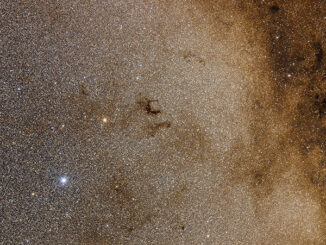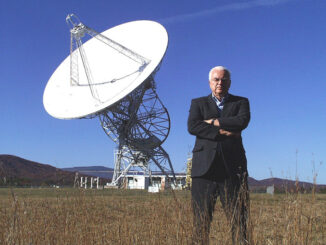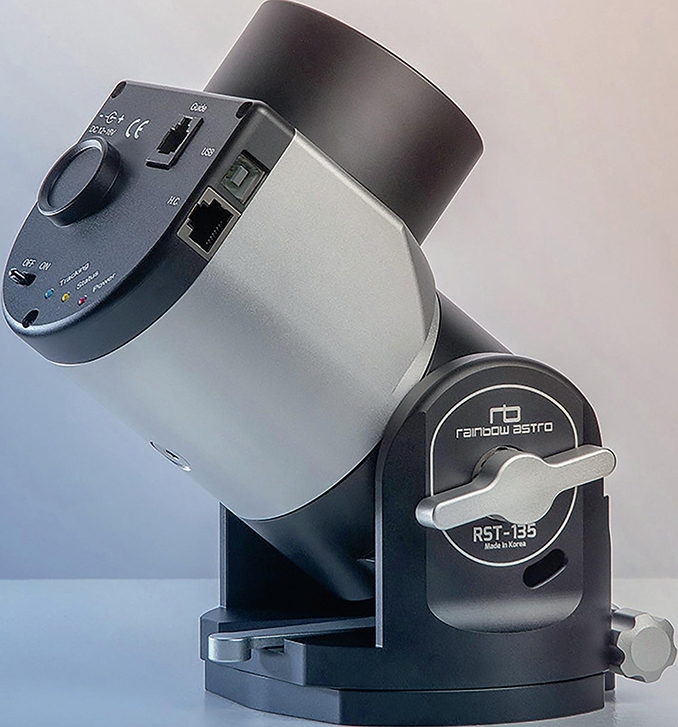
The Rainbow Astro RST-135 mount is an ultra-lightweight robotic mount with a harmonic drive. Harmonic drive mounts have been around in different forms for a few years now, but the cost of making a harmonic drive, also known as a Strain Wave gear in the world of industrial robotics, has now dropped to a price point that less well-healed amateur astronomers can consider. Why would you want a harmonic drive? Because it experiences no backlash, requires no maintenance, and needs no balancing – that’s why. Could this be a seminal moment in mount technology?
A harmonic drive experiences no backlash, requires no maintenance, and needs no balancing
The mount graveyard.
I live in central London and when I say central, I mean right in the middle. On a good night, four stars might be visible in the amber murk above the city of London. Long story short, portable astronomy equipment is what I need. Even a night’s observing usually means packing a couple of small cases and heading 15 miles out of town where the light pollution is manageable.
Over the past 15 years I have purchased eight mounts (even I was surprised when I totted them up) in my quest to find the perfect ‘Holy Grail’ mount. I began with one of those telescope/mount combinations that we all start with, but it was heavy and frustrating as a beginner to carry and set it up 15 miles away. The members of my local astronomy society advised me to switch to something a little more portable for my experience level. Binoculars, followed by a smaller 90mm telescope and an unpowered alt-az mount were next, a very handy combination that many of us still have. However, aperture fever gripped me, and so I then ended up with a big 12.7-kilogram light-bucket requiring heavy mounts and tripods. I bought a beautifully built but confusing mount that was very heavy and quickly resigned to the mount graveyard in the cupboard, only for use at star parties where set up was like beginning from scratch.
Over the past 10 years, alt-az push-to mounts have added computers, while the driven German equatorial mounts (GEMs) have Wi-Fi and tracking, and each type of mount has headed deeper into its respective niche, visual astronomy for alt-az mounts and astrophotography for GEM mounts. Both types of mounts have shrunk in size: I’ve bought at least two of each but none of them from the high-end manufacturers because I’ve always felt that there would be a better solution just around the corner, but what would that look like?

The Holy Grail
What I really wanted was a mount that does everything. It should be small with the capacity to carry about 20 kilograms worth of kit. Let’s be honest, that’s lots, even for astrophotography. The mount needs to be able to set itself up simply by plonking it in a field where it will orientate itself without having to be balanced. It shouldn’t make a noise so that I’m not getting shouted at in the middle of the night by neighbours or star-party goers. It should be customisable, so that I can have a colour I like instead of black or observatory grey (yawn). It must be beautifully engineered and, most importantly, it should operate via an app on a phone, such as Sky Safari.

The RST-135 mount, from South Korean company Rainbow Astro, ticks many of these boxes. It is small and compact enough to be held in one hand, weighing 3.3 kilograms. It can operate in alt-az or GEM mode, and it can do a two to five star alignment, or align on Polaris. Able to carry 18 kilograms when a counterweight is employed and 13.5 kilograms without one, it has a very large capacity for its size. It requires no balancing and has GPS and Wi-Fi so that it can be controlled using an app, or via a hand controller that comes with the mount. It can determine its own location so long as you point it accurately to the north and have it dead level.

The RST-135 is beautifully machined from aluminium and the standard of finish is very high indeed. The mount can be ordered in a variety of colours (silver, green, yellow, blue, red, brown and purple). I chose purple, which is a little extrovert but it’s my favourite colour. I ordered the mount direct from Rainbow Astro and had a lovely chat with the guys there. They were incredibly helpful and the whole ordering process was very slick.
The controls are very simple. There’s a power button, a round adaptor to mount a PoleMaster adaptor (more on this later), a nice metal on/off toggle switch, lights for tracking status and power, a guide port, and a USB socket for connecting a camera and/or laptop, and a port for the handset.
It arrives in eco-friendly plain cardboard packaging, along with some fun stickers on the box and an extra set of stickers inside. It has its own Cordura bag, and there is also a T-key, a USB type-C power cable for connecting to a battery, the handset cable, and a cable to connect a laptop computer.
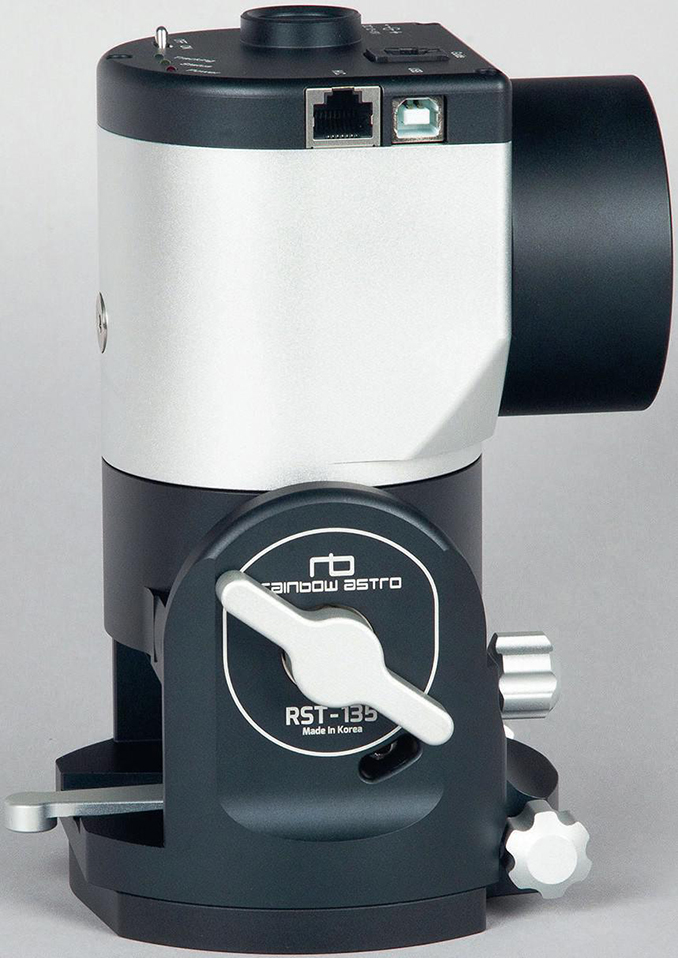
The T-key is used to switch the mount between GEM and alt-az mode, but you will need to provide your own power supply. I bought a nice 12V, lownoise power supply from First Light Optics, which works very well.

Technical details
Although the mount is very small, it has a similar design to most GEM mounts. It accepts Takahashi Temma mount plates, and you can buy a compact Vixen or Losmandy plate from Super Mount (another Korean company, supermount.kr). A dual Vixen/Losmandy plate (such as those from ADM) with the correct Temma-style fit would be the best option, particularly if you are planning to use small and large telescopes.
The GPS and Wi-Fi are built into the hand controller, which is called the HUBO-i NaviCom. It is available across the Rainbow Astro product range.
For anyone who has ever used a hand controller, it’s all very straightforward.
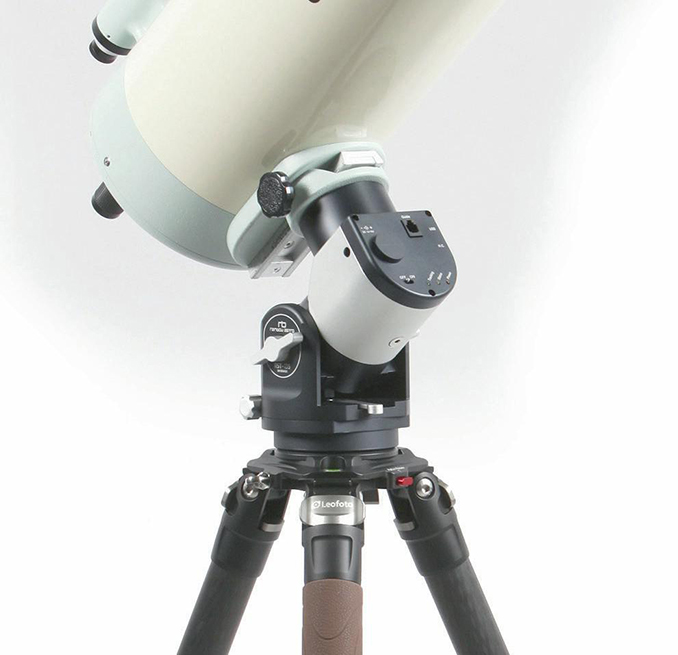
Visual observing
My first experience of using the mount was at the Kelling Heath star party. Setting the mount up was a breeze. I used my Astrophysics 92mm Stowaway (a triplet apochromat) on a Vixen plate, along with a selection of Tele Vue eyepieces and a Tracer 12V, 16ah LifeP04 battery. Although this battery is almost as big as the mount, it powered it for the entire night.
I also used the Super Mount Portable pier and a Super Mount Vixen plate. Super Mount are closely affiliated to Rainbow Astro and their equipment is a great option, particularly if you plan to use larger telescopes on the mount. However, if you’re looking for a lightweight combination, then the mount can be put on a camera tripod and Rainbow Astro have several half pier options to mate the camera tripod and mount together.
Mating the RST-135 to the Super Mount pier is very straightforward. The Super Mount is another beautifully engineered piece of kit. The carbon weave is very high quality and the whole thing feels strong yet very light, and it is just matter of tightening four bolts on the bottom of the mount to complete the mating process.
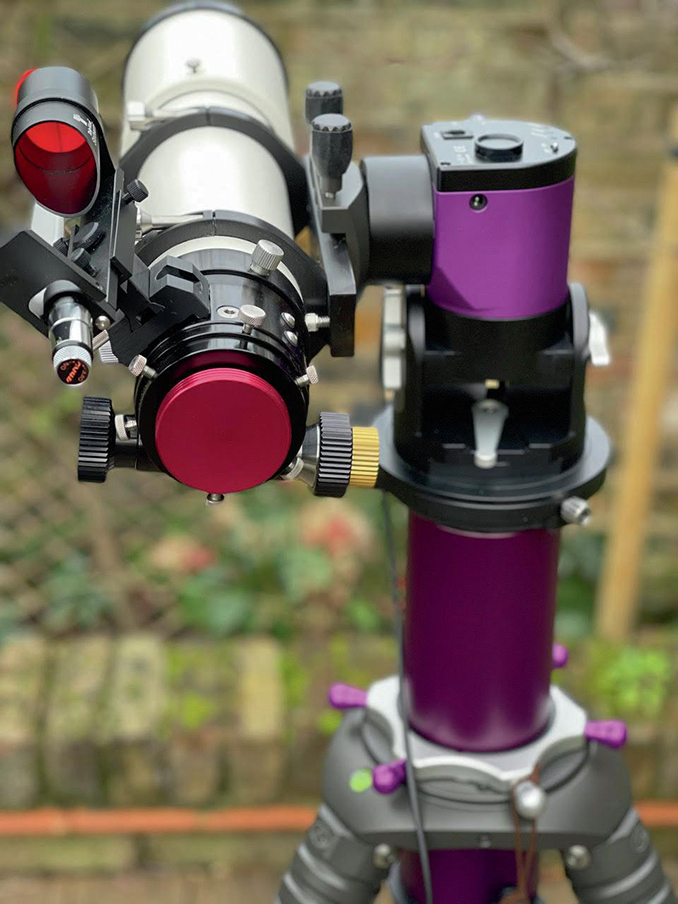
Since I was visually observing, I first had to switch from GEM mode to alt-az. This involves inserting the T-key into the slot just underneath the clutch and loosening a bolt by a quarter of a turn.
The two altitude bolts either side of the mount should then be loosened and by gently twisting the mount, it pivots it into its alt-az position. Make sure to tighten up the bolts before embarking on alt-az operation. There are some options to select on the menu to tell the mount that you are operating in alt-az mode, but this is well explained.
Once you have your telescope attached to the mount in the home position, which is beautifully indicated on the mount plate, then you need to point the whole thing towards the north. For this purpose, I used my iPhone compass. Members of the excellent Rainbow Astro Facebook groups suggested using a digital spirit level to ensure that the telescope is dead level before attempting the alignment process. These can be bought cheaply online.
Rainbow Astro recommend a five-star alignment process, but for the initial run I used a two-star alignment. Despite having no digital spirit level, the mount tracked accurately for the whole night (seven hours of observing) with no discernible drift. It worked like a dream with Sky Safari, which was easy to connect.

Astrophotography
To use the mount for astrophotography, you can reverse the process described earlier to turn the mount back from alt-az mode into its GEM configuration. The altitude is marked on the rear of the mount; you just need to set it to the appropriate number for your location.
For a high degree of tracking accuracy there is a PoleMaster camera adaptor at the front of the mount. PoleMaster allows you to track the Pole Star using the PoleMaster’s built-in camera and some software for your laptop, and it makes continuous automatic adjustments to ensure that you stay locked on target.
The British weather has not provided a good night for astrophotography recently, but judging by the quality of the images on the Rainbow Astro Facebook page, it’s an excellent option for astrophotographers.
If you want to use the mount with larger telescopes, then it is possible to add a counterweight to the telescope so that less strain is placed on the harmonic drive. A counterweight shaft and counterweight are available at extra cost.
The T-key is used to remove the bolt covering the counterweight shaft connector.

Conclusion
The Rainbow Astro RST-135 is an excellent mount. Its small size, capabilities and ease of use make it an attractive option. It is expensive, but when you consider that it will be all the mount most astronomers will need, then it represents surprising value, particularly when you consider that you can replace your alt-az and GEM mounts with this one easy-to-use option.

Astrophotographers considering this mount may want to check out the version that comes with an absolute encoder (the RST-135e), and those with need for even greater capacity should look at the Rainbow Astro RST-300. Either way, this mount is achingly close to being the one mount to rule them all.
At a glance
Mount type: dual mount, German equatorial and altazimuth
Capacity: 13.5kg without counterweight, 18kg with counterweight
Mount weight: 3.3kg
Dimensions: 14.2 × 13.1 × 19.5cm
Latitude range: 0–90 degrees
Maximum slew rate: 7.5 degrees per second
Power: DC 12–16V
PC connection:ASCOM driver
GPS and Wi-Fi: Built into hand controller
Price: $3,895
Details: rainbowastro.com
Richard Deighton is an amateur astronomer and a former chairman of Loughton Astronomical Society.


